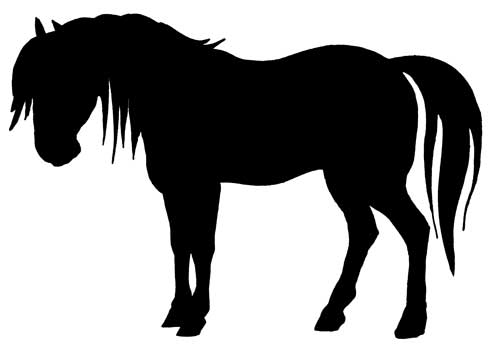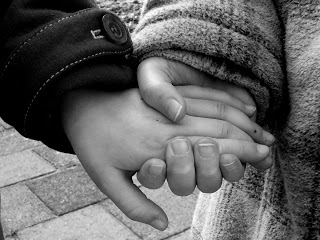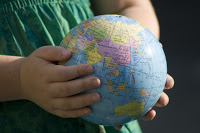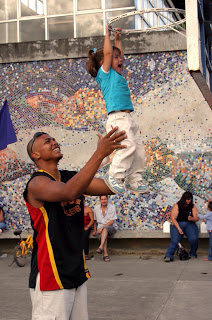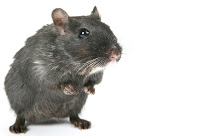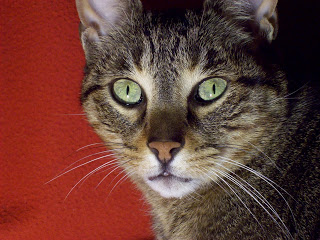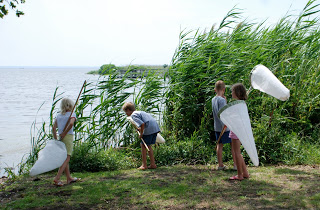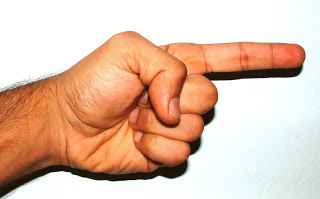To fear is one thing. To let fear grab you by the tail and swing you around is another. ~ Katherine Paterson
Monthly Archives: August 2011
Nothing Is Bad?
Elsewhere on this blog I have pointed out how nearly-identical stories can arise in separate corners of the world. For example, I’ve offered the Judgement of Solomon paired with a Birbal story from Moghul India; I’ve shown the connection between Chicken Little and one of the Jataka tales of Buddha. Whenever I find stories that have a separated-at-birth twin story elsewhere in the world, I sit up and take notice: there is something powerful to be learned here, something that may be universal to human nature. I remind myself to listen well!
Compare this story to a well-known Zen koan, sometimes referred to as, “Maybe it is, maybe it isn’t.”
A farmer had worked his fields with the aid of his horse for many years. One day, quite unexpectedly, his horse ran off.
Is it possible that nothing is bad? How does courage help us avoid judgment?
A Hurricane is Coming!
Hurricane Irene headed my family’s way recently. Were we scared? No. Did we decide to cut short our RV vacation by one night in order to avoid being pushed around by Irene on the I-87 battling her high winds and rain? Yes. Were my children anxious about the storm brewing down south heading our direction? No. Why not? Well, as a family we decided to opt for courage instead of fear in this case. We made sure to get all the information first, and then we made a couple sound decisions. We checked we had a flashlight or two, some water and extra provisions, and we charged our cellular phones. We also decided to still use our tickets for a five-minute hot air balloon ride we’d purchased before we hit the road home, before the winds started to blow. Granted, we were not in the eye of the storm and many folks on the East Coast needed to be much braver than us. That said, I decided to reframe this whole experience as an adventure. Having kids in your life will help you develop this healthy habit!
By now, most of you reading this post will know that the hurricane expected turned out to be a tropical storm of much less magnitude than expected. There are few such anticipated changes, disasters, and/or tough times that we can actually try and predict other than the weather these days. And even the weather, despite all our modern technology, continues to be increasingly unpredictable! The truth is that we can predict very little in life. Saving our energy for rainy days, like those of us on the East Coast are enduring, is a much better use our courage resources than worrying about imagined futures that may never come to pass. For an illustrative example of the dangers of worry and the importance of getting all the information first before responding, read Jennifer’s previous post: The Sky is Falling? Really?
It would be nice if we could predict, chart, and know the outcome of every storm we will weather in life. The only thing any of us knows for sure is that there will be storms. Sometimes we will be better prepared than others. We can, however, always choose how we cognitively frame the experience. We can be afraid and freeze, or we can be in action. My husband often says to me, especially on days when I’m anxious and want to shrink from life’s demands, “90% of life is just showing up.” I hate to admit it, but he’s right. We all have the capacity to choose courage, and even to reframe our fear-based fight, flight, or freeze response as “excitement.” Either way, our biochemistry and our thinking will be a match. I remind myself that there is little I can control in life, despite my best white-knuckled efforts to the contrary. Like many other East Coasters who choose not to live in fear, and who have tucked their children and pets safely inside to shelter them from the storm, I hope to have more energy and resources to deal with what may come. It is humbling to be human, and yet always possible to be brave!
Courage Challenge of the Day
Children, Courage, and Adaptive Capacity
The committee defined an earthquake-resilient nation as “one in which its communities, through mitigation and predisaster preparation, develop the adaptive capacity to maintain important community functions and recover quickly when major disasters occur.” – National Institute of Standards and Technology, New Study Maps Out Steps to Strengthen U.S. Resilience to Earthquakes
The adaptation projects made possible by the WCS Climate Adaptation Fund will increase the adaptive capacity of wildlife and their habitats to new conditions precipitated by climatic changes. – Wildlife Conservation Society, press release
But the one competence that I now realize is absolutely essential for leaders – the key competence – is adaptive capacity. Adaptive capacity is what allows leaders to adapt quickly and intelligently to relentless change. – Warren Bennis, On Becoming a Leade
Adaptive capacity is an idea that applies to ecological and human systems, and refers to the ability of that system to manage change while maintaining integrity or without losing function. (Species extinction is one way to manage change – but it doesn’t maintain integrity for the species!) How great the adaptive capacity of a system is determines how well it can manage change.
How does this apply to parenting, and to children, and courage? The most fundamental human system is the individual. A person who is rigid physically, emotionally, intellectually – an inflexible person – is not going to adapt well to change. For many people, change is an alarming prospect; yet we know change will come no matter what. Strengthening our courage and our children’s courage may be a useful way to develop adaptive capacity. It’s also possible that it goes the other way – developing our adaptive capacity may strengthen our courage! Maybe it goes both ways at the same time. Maybe they are the same thing!
We have talked from the beginning about strengthening all six types of courage by trying new things. It may be that the process of trying new things – any new things – counts more than what the things are. Our willingness to experiment, break old habits, question our paradigms, risk making mistakes and greet change as a friend rather than an enemy may help us live longer and happier lives.
This is not about being changed by exterior forces, but changing from within as circumstances (our environment, our social relationships, our knowledge) changes. Nourishing our children’s adaptive capacity may be as important as nourishing their growing bodies. Adaptive capacity is now a buzzword in longevity research, sustainability, leadership studies and business. Let’s make it a buzzword for parenting, too.
Courage Quote of the Day
Belling the Cat
A large community of mice had been comfortable in the barn for many generations. Then, like a bolt of lightning, a cat appeared out of nowhere, picking them off without regard for age or prestige – a patriarch yesterday, a nursing mother today – even the bold buck mice were keeping in their holes.
“Council! Call a council!” the mice began to squeal.
Under the floorboards, the mice congregated in a great huddle. Over their heads was the soft pad-pad-pad of the hunting cat.
“We’ve got to do something,” the head mouse said. “Who has an idea?”
They all looked at each other, but hesitated to make eye contact. Finally, one young mouse piped up. “If we had a warning system, and could hear him coming, we’d have a better chance of escaping.”
“See! See!” his friends squealed. “Great idea!”
Even the big mice were impressed, and they all put their heads together to figure out what kind of warning system would work. There was much chitting and chatting about systems and techniques and devices. At last a big gray mouse stamped his foot. “I’ve got it! A bell! If that cat had a bell hung around his neck, we’d hear him wherever he went!”
The mice crowd erupted in wild cheers. Friends clapped the genius on the back and congratulated him, and he looked pleased and proud. There was some talk of replacing the head mouse with this fellow, and some of the young mice started planning a party to celebrate. At last the clapping died down. An uneasy silence descended, and again the footsteps of the cat could be heard overhead.
“So,” said a granny mouse looking around. “Who’s going to put the bell on that cat?”
Not a peep.
About Stories
David Leeming and Jake Page, Myths, Legends and Folktales of America
Courage Quote of the Day
Courage Challenge of the Day
Do nothing! Set a timer for five minutes, and then sit quietly doing nothing other than breathing, and letting your thoughts pass across your mind without judgment like clouds passing across the sky. Try not to check the timer. Don’t make plans for what you’ll do when the five minutes are up. Try this challenge with your kids. Next time you’re considering giving your child a time-out, give both of you the time-in together for five minutes of silence. Will you need courage to set aside the busy-ness of your life for five minutes? Sometimes, when we don’t build time into our lives for quiet contemplation we become reactive instead of mindfully responding in line with our life-affirming values.

